A chorus pedal is a must-have for any guitarist looking to add some depth and character to their sound. This versatile effect pedal has been used by legendary guitarists for decades now, and it can transform a dull tone into a lush landscape that seems like an entire ensemble.
Knowing how to use a chorus pedal can take your playing to new heights. It’s more than just a cool toy; it’s a tool that can flavor your melodic ideas and give them the extra push they need to sound cool. So what does it do and how to use it?
A chorus pedal thickens and enriches your sound by duplicating the signal and slightly delaying one or more copies. To use a chorus pedal, connect it to your guitar and amplifier, and adjust the level, rate, and depth controls to your liking. Then, activate it by pressing the foot-switch.
That was just the TLDR of how to use a chord pedal. I’ve put together a quick guide with 11 tips from my experience and research to help you get the best out of a chorus pedal. Keep reading to find out how you can use one in any genre and for pretty much any purpose.
11 Tips For Using A Chorus Pedal
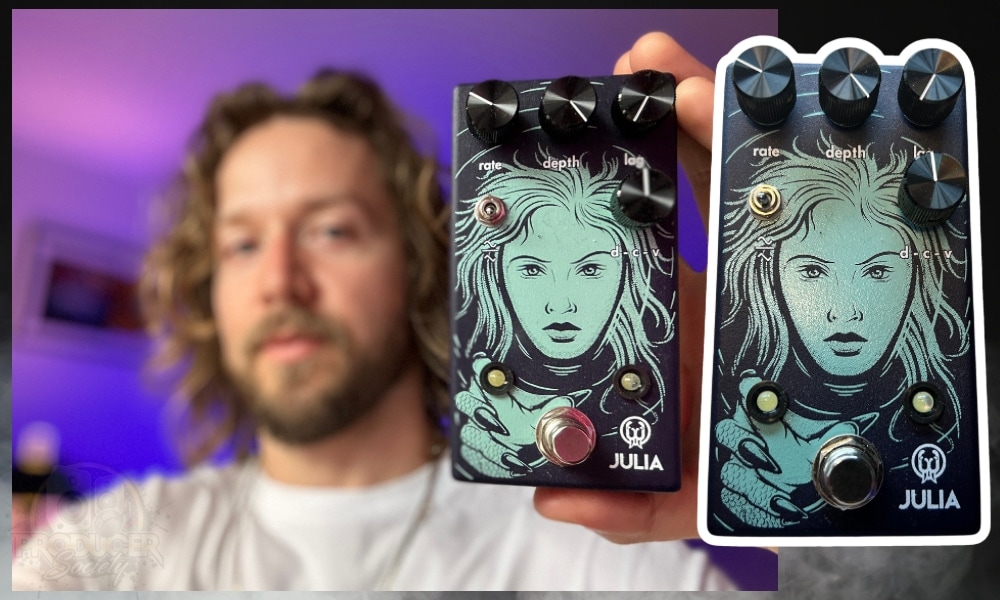
1) Understand the Effect and How It Works
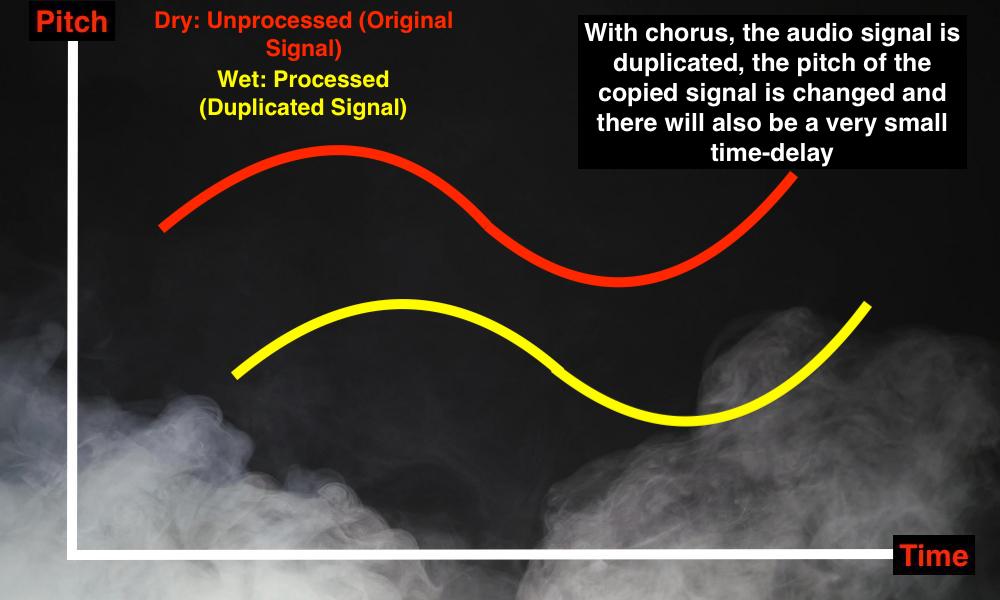
It’s helpful to understand how the chorus pedal works. I’ve explained before in my guide on vibrato and chorus that a chorus pedal copies your guitar’s signal, slightly modulates the pitch & time of the duplicate, then mixes it with the original signal.
This creates a lush, shimmering effect that can add depth and space to your sound. So what you’re hearing is a double-layered guitar: one is the original, and the other has just a slight pitch shift and delay.
Different chorus pedals tend to achieve this a bit differently, so check how yours works. This makes it easier to choose the right one for your song, and the process of adjusting it becomes much quicker.
2) Start with Subtle Settings
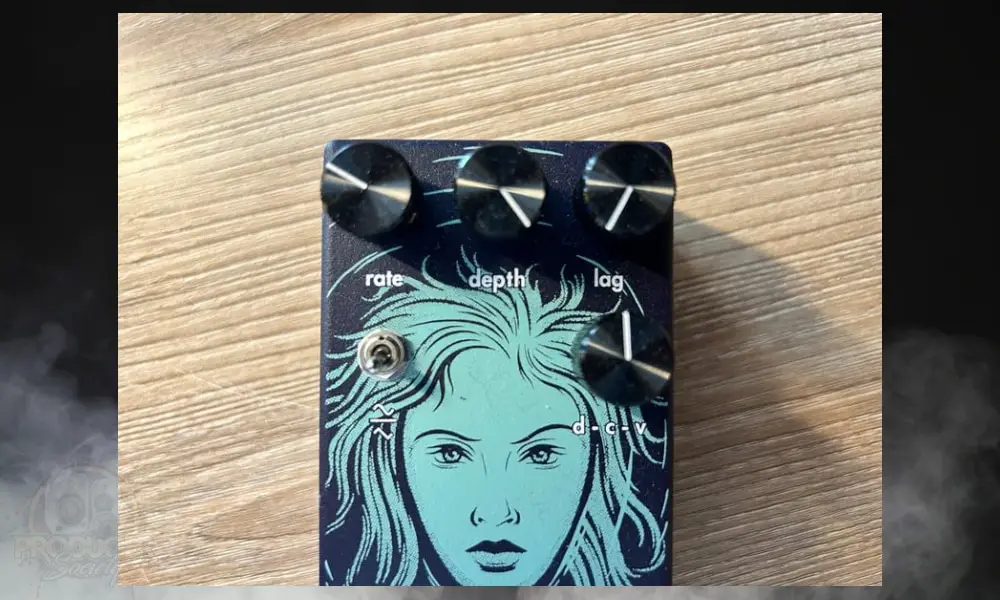
When dialling in your chorus pedal settings, begin with the knobs at default levels. Starting with a subtle effect can help you become familiar with the pedal’s controls and how they interact with each other.
Slowly increase the depth, rate, and mix until you achieve the desired effect. Try to only adjust one knob at a time, then test the tone. I’ll discuss more about each control next.
By making gradual adjustments, you can better understand how each parameter affects your sound and avoid overwhelming your tone with too much chorus.
As you become more comfortable with your chorus pedal, you can experiment with more extreme settings. However, starting with a subtle approach can help you develop a solid foundation for using the chorus effect effectively.
3) Blend the Effect
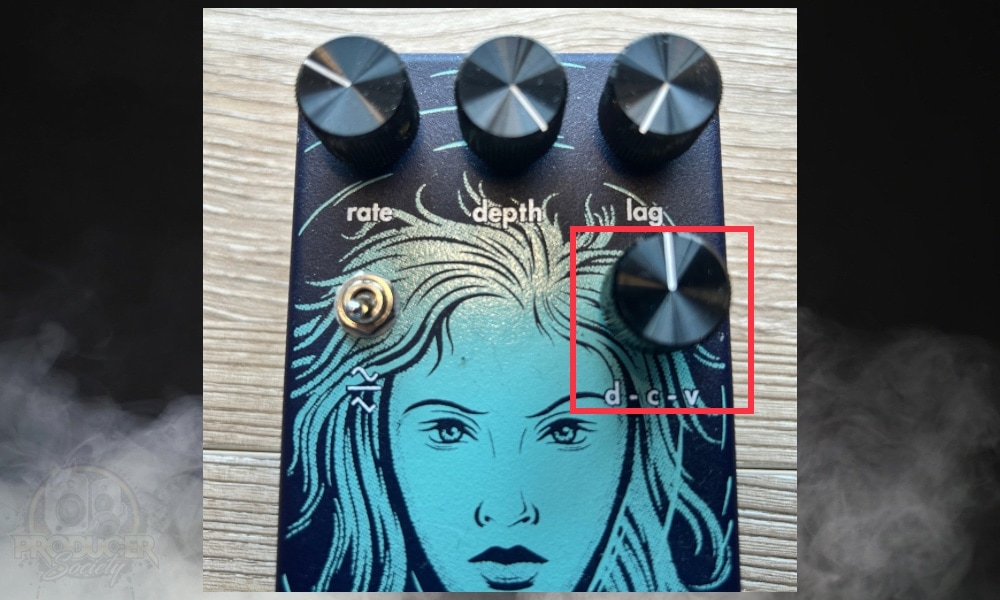
The mix or level knob on the chorus pedal allows you to blend the wet (chorus-affected) and dry (unaltered) signals.
A lower mix setting can provide a hint of the chorus without overpowering your guitar’s natural tone.
This can be especially useful when playing with a band, as it adds depth and character to your sound without making it overly complex or muddying any other instrument.
Conversely, higher mix settings can result in a more immersive chorus effect, which can be ideal for creating lush, dreamy soundscapes. This is great for a clean arpeggio that can build up a large sonic atmosphere for a song.
Take the time to explore the full range of your mix knob to find the perfect balance for your playing style and musical context.
4) Adjust the Rate According To Your Song’s Tempo
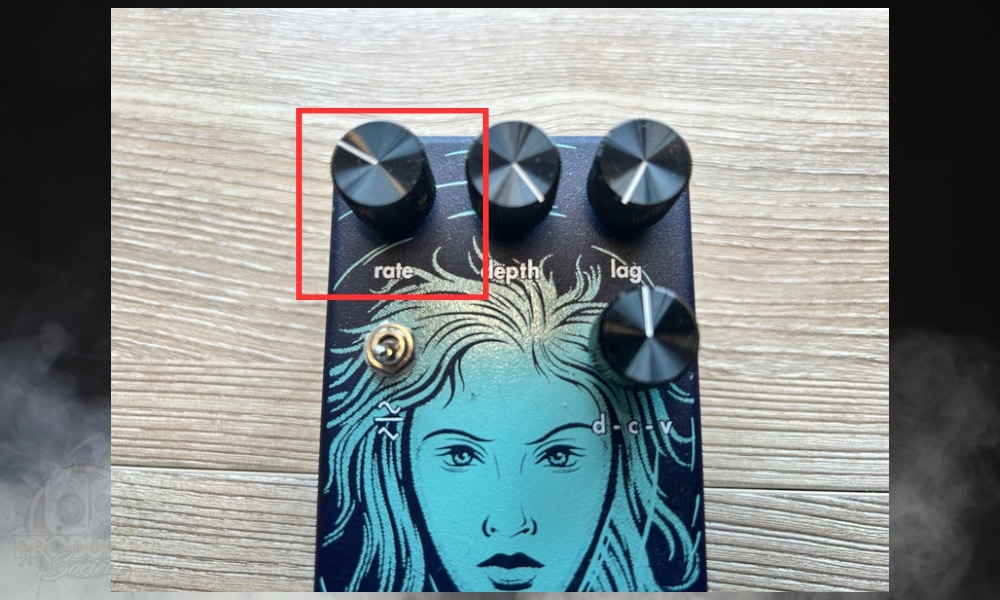
The rate knob controls the speed of the modulation. Slow settings create a gentle, swirling effect, while faster settings can produce a more dramatic, Leslie-speaker-type sound.
A slow setting is great for a subtle, undulating texture that adds more body to your sound.
A medium-fast rate helps you achieve some really cool tones, like Nirvana’s “Come As You Are,” from Nevermind. And setting it near max will give you a sick wobbly tone if you’re into that.
Faster settings can introduce a sense of motion and energy to your sound, making it suitable for more aggressive playing styles or psychedelic genres.
Some chorus pedals also have a ‘tap tempo’ stomp button, which you can use to modify the rate in real-time. This is really useful if you want to change the tempo mid-song, or if you find it difficult to set the rate exactly as you need.
My Julia chorus pedal has a rate LED on it that flashes and pulses according to the rate, so you know how fast it is. Turn up the rate and the LED will get faster, turn it down, and it’ll get slower.
5) Control the Depth
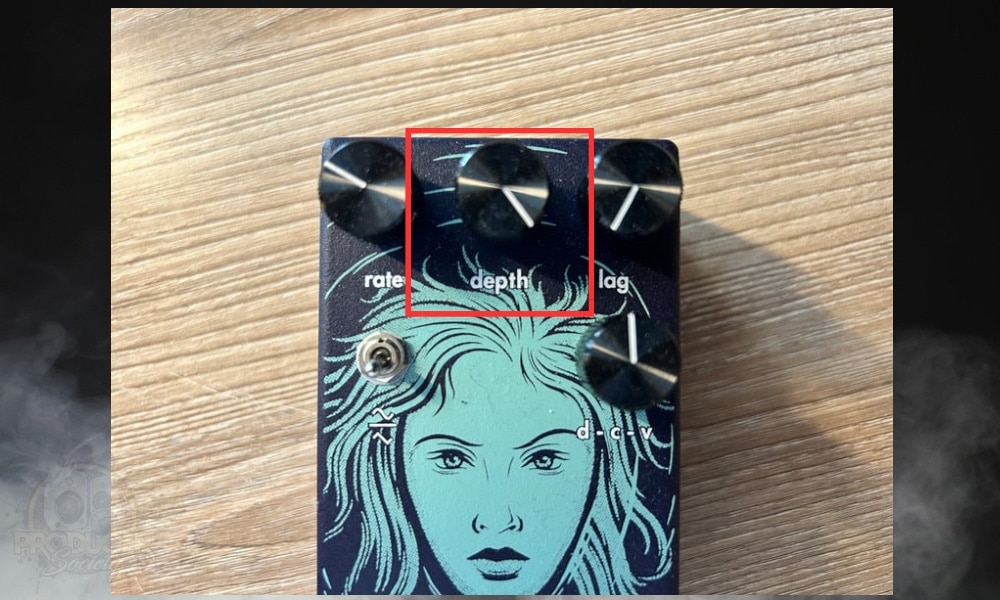
The depth knob adjusts the intensity of the pitch modulation. A lower depth results in a more subtle effect, while more depth can create a more dramatic, seasick-like sound.
Low-depth settings can add a touch of warmth and dimension to your sound without drawing too much attention to the effect.
This can be useful for rhythm playing, where a more subtle chorus can help fill out the soundscape without overpowering the other instruments.
High-depth settings can produce a more exaggerated, warbling effect that can be perfect for lead lines or experimental soundscapes.
Be mindful, however, that too much depth can make your sound overly disorienting and may not work in every musical context.
6) Experiment with Signal Chain Placement
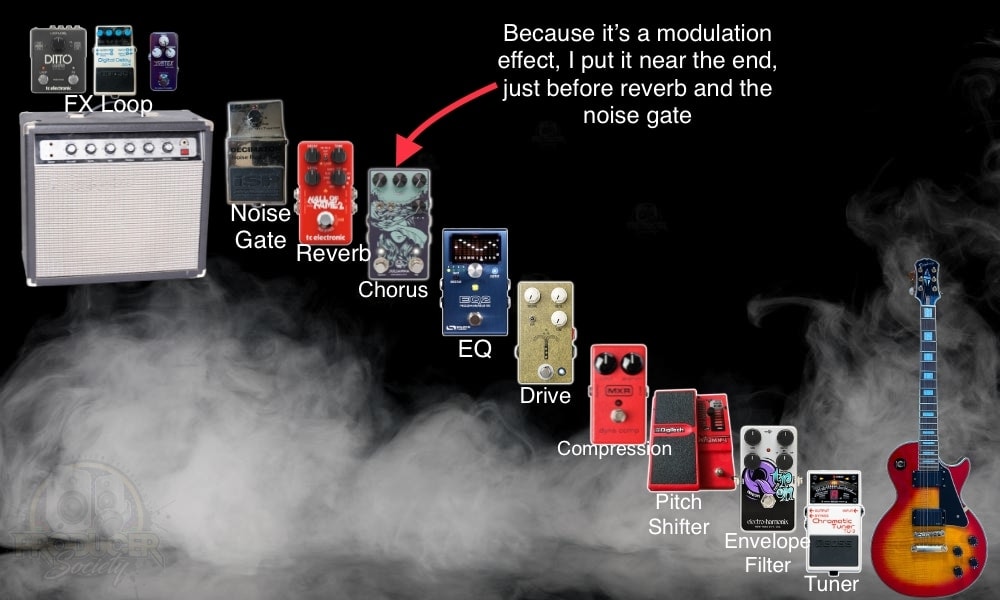
The placement of your chorus pedal in your signal chain can significantly impact its performance.
For the best results, place the chorus pedal after your gain pedals (overdrive, distortion, and fuzz) and before any time-based effects like delay and reverb.
This will ensure that the chorus effect remains clean and doesn’t get muddied by other effects.
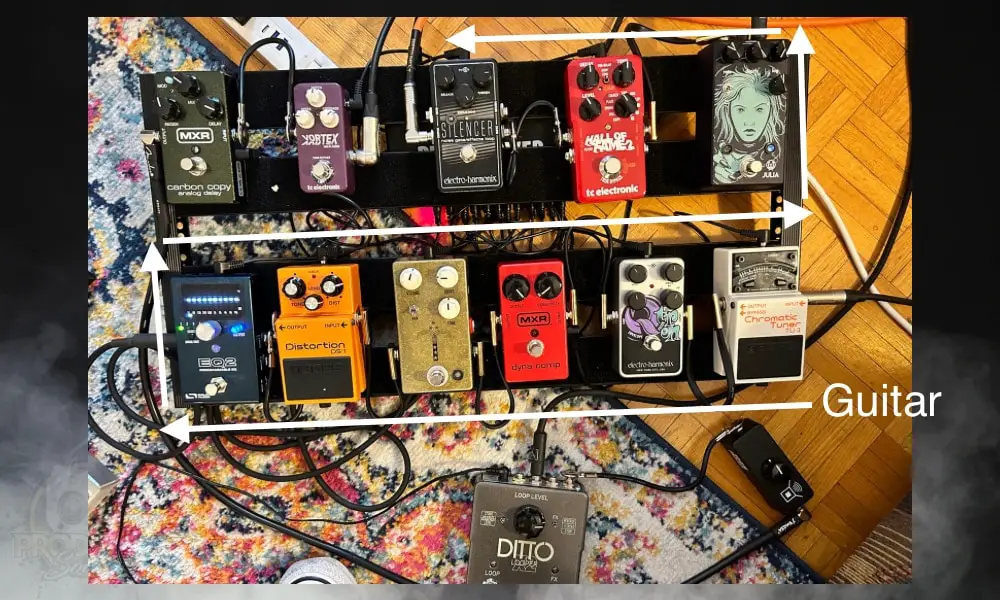
This recommended placement provides a starting point, but remember that every guitarist’s setup and preferences are unique.
You may find that placing your chorus pedal after your reverb pedal, for example, gets you a more ethereal, ambient sound that suits your style.

Experimenting with different placements in your signal chain can lead to unique and interesting sounds. Take the time to try out different configurations to discover the perfect spot for your chorus pedal in your setup.
For example, adding two chorus pedals can make it really wacky: you’re essentially quadrupling your original sound.
7) Adjust the Tone for a Bright or Dark Sound
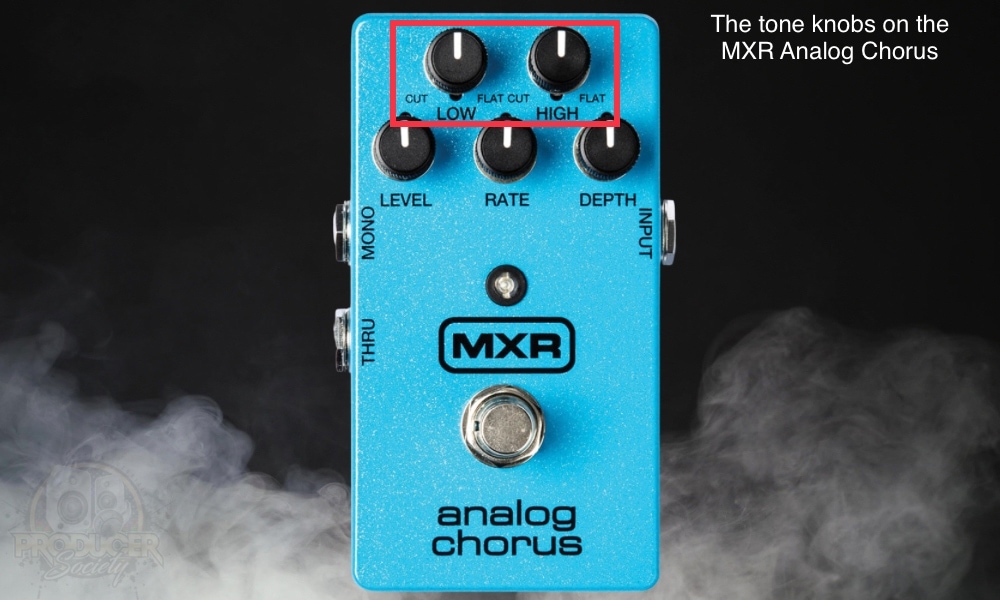
Some chorus pedals have a tone or EQ knob that allows you to adjust the brightness or darkness of the effect. It’s very similar to the tone knob on your guitar, so you can leave it on default if you don’t need it.
But it’s a useful feature for adjusting the tone mid-performance. If your guitar has a bright, trebly sound, you could set a dark chorus sound using this. Or vice-versa: a bright sound can help cut through the mix and add shimmer.
The tone control can also be useful when playing in different rooms or with different amplifiers, allowing you to adapt your chorus effect to suit the specific setup.
8) Try the Stereo Output
If your chorus pedal has a stereo output, take advantage of it by connecting two amplifiers or a stereo PA system for a wider, more immersive sound.
The stereo output essentially splits the wet and dry signals, sending them to separate outputs for a more spacious effect.
Using a stereo setup can provide a sense of depth and space to your sound that’s difficult to achieve with a mono setup.
This can be especially effective in live performances, where a stereo sound can help fill out the room and create a more engaging listening experience.
You can also get creative and try combining the stereo output with a stereo delay; this can result in some pretty unique tones.
Experiment with different amplifier placements and settings to find the optimal stereo configuration for your chorus pedal. Some chorus pedals have additional stereo options, so check them out.
9) Combine Other Effects like Flangers & Phasers
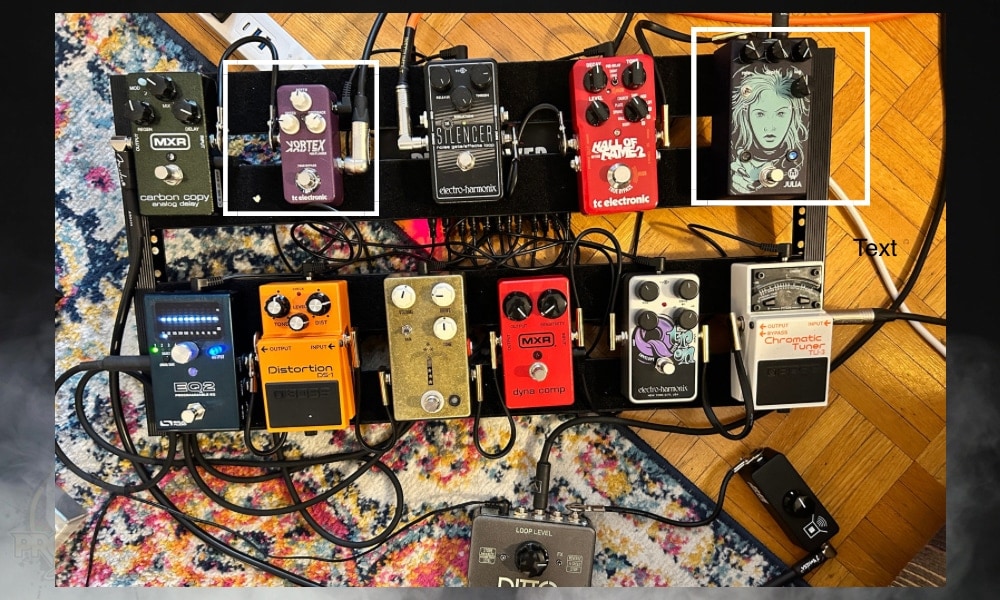
For even more tonal experimentation, try combining your chorus pedal with other modulation effects like phasers, flangers, or tremolos.
Layering multiple modulation effects can result in complex, evolving soundscapes that are perfect for ambient or experimental music.
For example, using a chorus pedal with a phaser can create a sweeping, swirling effect that’s perfect for psychedelic music.
Using a chorus pedal with a flanger can create a more metallic, futuristic sound that’s great for alternative genres.
I recommend using the TCE Vortex Flanger Mini (on Amazon) because it’s super small, it sounds great, and it come with oodles of presets that you can beam onto the pedal with your phone.
When used with distortion or overdrive, a chorus can add a sense of movement and complexity to your sound, creating a rich, textured tone. This can be particularly effective for lead playing.
When combining modulation effects, be mindful of your settings to avoid overwhelming your sound with too much modulation. Start with subtle settings on each pedal and gradually increase the intensity to find the perfect balance between the effects.
10) Use It As A Boost
You can also use a chorus pedal as a boost: just increase the Level knob to the max, and it’ll increase the volume of your guitar. You can set the other settings to a low for a subtle effect, so it’ll act a lot like a clean boost.
This is particularly useful if you want to add chorus to a guitar solo, as it’ll help you shine through the mix. Not all chorus pedals have a Level knob though. Mine doesn’t, although, my Line 6 M5 Stompbox Modeller has one.
11) Sometimes Less is More
Chorus is an excellent effect, but don’t push yourself to go over the top with it. Using too much of it can make your guitar sound washed out and indistinct. But a hint of chorus can add life and texture to a dull guitar tone.
When playing with a band, consider using a more subtle chorus setting to maintain clarity in the mix. For solo performances or recordings, you’ll probably have more room to experiment with heavier chorus effects.
What I like about my Julia chorus pedal is that it brings a nice mid-range saturation to my guitar sound. It’s a really great sounding and cool looking pedal that doesn’t have a digital sound to it at all.
Other Articles You May Be Interested In
- What’s the Difference Between Reverb and Chorus [ANSWERED]
- How to Use The TC Electronic Vortex Mini (+ 5 Cool Settings)
- Where to Put The Flanger In Your Signal Chain? (Quick Tip)
- How to Use A Tremolo Pedal [A Step-By-Step Guide]
- How to Use A Vibrato Pedal [An Illustrated Tutorial]
Important Things To Note About Chorus Pedals
1) Some Pedals Are True Bypass or Buffered Bypass
Chorus pedals can have either true bypass or buffered bypass circuits. True bypass preserves your guitar’s signal when the pedal is off, while buffered bypass can help maintain signal strength and integrity over long cable runs.
The Walrus Audio Julia Chorus, for example, has a true bypass circuit which means it won’t diminish your tone while it’s turned off.
2) There’s A Difference Between Analog & Digital Chorus
Analog chorus pedals typically use bucket brigade devices (BBD) to create the chorus effect, while digital pedals use digital signal processing (DSP) algorithms. Analog pedals often produce a warmer, more organic sound.
While digital pedals can offer greater precision and versatility, but might sound a bit thin to some. I can’t say for certain whether my Julia chorus pedal uses a BBD circuit, I do know that it’s an analog pedal, not digital.


 Written By :
Written By :
